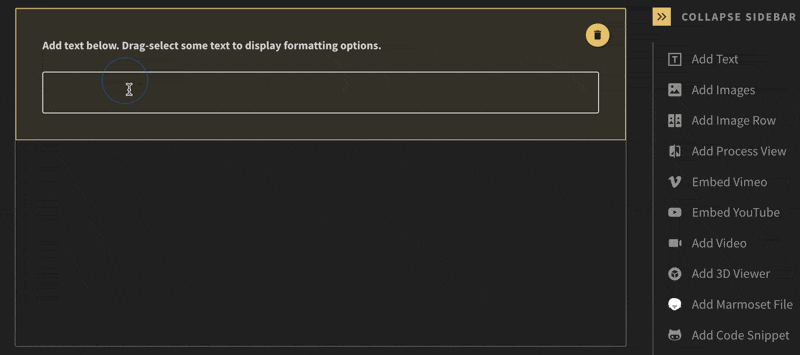Crediting Work That Isn't Your Own
This article is intended as a general guide for educational and community purposes. It is not legal advice. If you have specific legal concerns about copyright or fair use, we recommend speaking to a qualified legal professional.
The Rookies is a platform built on trust, creativity, and honest representation. Whether you're entering a contest, publishing a project, or updating your portfolio, it’s essential to be clear about what work is truly yours, and what was created by others.
This article explains:
- What attribution is and why it matters
- When you must give credit
- How to credit someone properly
- What’s allowed under educational use
- The risks of failing to follow these guidelines
- How it aligns with our Terms and IP Policy
What Is Attribution?
Attribution means clearly acknowledging when someone else created part of the work you’re sharing.
It applies when you:
- Use a photograph, stock media, illustration, or concept art by someone else
- Model something based on another artist’s design
- Use school or group projects where you only created part of the work
- Include public assets, AI-generated work, asset packs, or even music not made by you
If you didn’t create it, and it appears in your project or entry, you must say so.
Remember, 'educational use' allows you to learn from a style or recreate a concept to practice your skills. It does not allow you to claim the original idea or design as your own.
Why It Matters
- Legal Protection: Copyright law protects original creators. Using someone’s work without permission or credit can expose you and The Rookies to legal action.
- Integrity: The creative industries are built on reputation. Being honest about your contribution is essential.
- Trust: Schools, recruiters, and judges rely on The Rookies to present accurate portfolios. Misleading work breaks that trust.
- Respect: Giving credit acknowledges the work of others and helps the community grow.
Can I Use Someone Else’s Work Without Their Permission?
In some cases, yes - but only under strict conditions.
If you're using someone else’s work for educational reference only - not for resale, monetisation, or professional promotion - and you clearly explain this in your project description, you generally do not need explicit permission.
This is considered acceptable under fair use / fair dealing principles in many regions for non-commercial, educational use.
But:
- You must credit the original creator (name + link if possible)
- You must not imply the idea or work is yours
- You must not use the work in a commercial, promotional, or monetised context
If your project copies or recreates someone else’s design, say so explicitly and give them credit.
How to Attribute Work Properly
Use this simple format directly in your project description or caption:

Example 1: Recreating a Concept
Attribution: Original concept art by Jane Doe (https://www.therokies.co/jonsnow), recreated here in 3D for educational use only. No rights claimed.
Example 2: Team Work
Attribution: This film was created as a team project. I was responsible for character modeling only. Lighting and rigging by other students.
Example 3: Referenced Photography
Attribution: Based on photography by Mark Smith (https://website.com). Used here for educational lighting and composition study.
Example 4: Mood Board or Image Collage
Attribution: Image on slide 3 is by Chris Nicholls (https://chrisnicholls.com), used here for educational mood board reference only. No rights claimed.
Example 5: Using a Pre-Made Asset
Attribution: The character model was created by me. The rock and foliage assets in the background are from the 'Quixel Megascans' library.
If you’re unsure, add the attribution anyway. It only strengthens your integrity.
When You MUST Attribute
To be clear, you must provide attribution in the following situations. If your project matches any of these descriptions, giving credit is mandatory.
| Situation | Attribute? |
|---|---|
| Used concept art from another artist | Yes |
| Recreated a famous photo in 3D | Yes |
| Used music from a free library | Yes |
| Shared a group project | Yes |
| Referenced a brand or copyrighted property | Yes |
| Included AI-generated work by others | Yes |
| Used photography in a mood board | Yes |
| Used free kitbash or downloadable models | Yes |
| Based your work on a tutorial project | Yes |
What Happens if You Don’t?
If you fail to properly attribute work:
- Your entry or project may be removed
- You may be disqualified from contests
- Your account could be restricted or banned
- We may be forced to cooperate with takedown requests or legal demands
Final Reminder
Learning from others is part of the creative journey. Referencing professional work, recreating concepts, or building on inspiration is completely acceptable - as long as you are clear about what is and isn’t yours.
Credit is not a weakness. It’s a mark of professionalism.